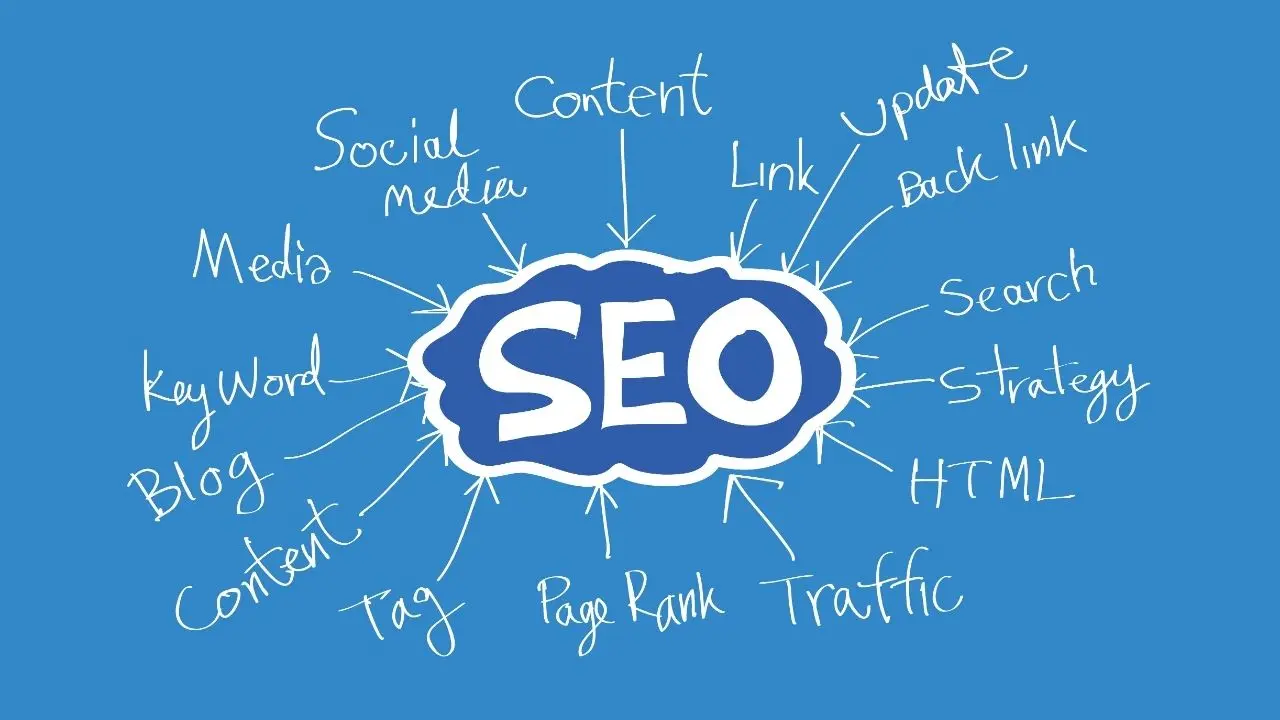What does SEO stand for? Simple answer : Search Engine Optimization. Long one : It is a multifaceted discipline focused on improving a website’s visibility in search engine results, with the ultimate goal of attracting organic non-paid traffic from users searching online. Whether you’re browsing for a new recipe, researching travel destinations, or comparing the best smartphones on the market, it’s likely that your journey begins with a search engine like Google, Bing, or Yahoo. Field of SEO Specialist, it is the process that helps ensure certain web pages appear prominently in search results.
Understanding SEO requires more than just decoding the acronym. It involves delving into how search engines work, how users interact with content, and what makes a website trustworthy and useful in the eyes of these search platforms. SEO is both a science and an art, balancing technical aspects with creative strategies.
This long-form guide gives an in-depth answer for the question ‘what does SEO stand for?’, how it works, why it matters, and the key practices that define effective optimization in the modern digital landscape.
Search Engines Evolution and SEO’s Birth
To understand ‘what does SEO stand for?’, it helps to look at how it came to be. Search engines like Yahoo began gaining popularity in the early 1990s, but it was the launch of Google in 1998 that revolutionized how the internet indexed and ranked content. Google’s PageRank algorithm, developed by Larry Page and Sergey Brin, measured the quality of web pages based on the number and quality of links pointing to them. This algorithm introduced the idea that not all web pages are equal, and some deserve to rank higher than others.
With the rise of Google’s influence, webmasters began to notice patterns in how websites were ranked. By tweaking certain elements like page titles, keywords, and backlinks, they could influence their rankings. This practice soon became formalized as search engine optimization. At first, it was about wild tactics, including keyword stuffing, link farming, and hidden text, methods now considered unethical and penalized by modern algorithms. Over time, search engines grew more sophisticated, and SEO became more refined, ethical, and user-focused.
How Search Engines Work
At the core of answering the question ‘what does SEO stand for?’, search engine optimization is about understanding how search engines function. Their primary job is to crawl, index, and rank content across the internet. Here’s a simplified overview of these stages.
Search engines use automated software known as spiders to scan the web. These follow links from page to page, gathering data about each page’s content, structure, and technical configuration.
Once crawled, the pages are stored in a massive database called the index. This is essentially a giant library of the internet. Elements of ‘what does SEO stand for?’ is the text, images, metadata, and other elements of a page to determine what it’s about.
When a user types a query into a search engine, it retrieves relevant pages from its index and ranks them based on hundreds of factors. The goal is to present the most useful, authoritative, and relevant content at the top of the results.
‘What does SEO stand for?’ exists to influence this entire process, ensuring that a particular website or page is crawled effectively, indexed correctly, and ranked as highly as possible for relevant queries.
The Core Elements of SEO
‘What does SEO stand for?’ consists of multiple components that work together to improve a website’s visibility. Broadly, SEO can be divided into three major categories, which are on-page, off-page, and technical SEO.
On-Page SEO refers to the optimization of elements within a website or specific webpage. This includes keyword usage, content quality, internal linking, meta tags, and user experience (UX). The goal is to ensure that the content is relevant and structured in a way that both users and search engines can understand easily.
‘What does SEO stand for?’ in the off-page category focuses on external factors that influence a website’s reputation and authority. The most well-known aspect of off-page SEO is link building, which is earning backlinks from other reputable websites. Social media mentions, brand citations, and online reviews also play roles in off-page SEO.
Technical SEO involves optimizing the infrastructure of a website to ensure that search engines can crawl and index it efficiently. This includes tasks like improving site speed, ensuring mobile-friendliness, fixing broken links, managing redirect chains, using secure HTTPS protocols, and creating XML sitemaps.
Each of these components plays a vital role in the success of ‘what does SEO stand for?’. Neglecting any one of them can hinder a site’s ability to rank well, regardless of how strong the content may be.
Keywords and Search Intent
One of the foundational concepts of ‘what does SEO stand for?’ is the use of keywords, which are the words and phrases that users type into search engines. Early SEO strategies focused heavily on keyword density and placement. However, modern SEO is much more sophisticated. It’s no longer just about including keywords, but about understanding search intent.
Search intent refers to the reason behind a user’s query. Are they looking to buy something or just seeking information ? Are they comparing options ? Understanding the type of intent, be it navigational, informational, transactional, or commercial, helps content creators design pages that meet the user’s needs more precisely.
To understand ‘what does SEO stand for?’, it is crucial to make the difference between a search that suggests commercial intent, while another one might indicate informational intent. Modern SEO aims to align the content with the user’s intent, providing a better experience and increasing the likelihood of engagement.
Content is Still King
No matter how technically optimized a website may be, it cannot succeed in ‘what does SEO stand for?’ without high-quality content, which is the vehicle through which keywords are delivered, questions are answered, and users are engaged. In recent years, Google’s algorithm updates, like Panda, BERT, and helpful content updates, have increasingly emphasized the importance of useful, original, and well-structured content.
Good SEO content is not just about stuffing keywords, but understanding the audience, addressing their pain points, and providing real value. This includes clear formatting, thoughtful organization, media elements like images or videos, and a strong grasp of the topic being covered. Content must also be updated regularly to remain relevant and accurate.
Mobile Optimization and Page Experience
As mobile devices became the primary way people access the internet, search engines began prioritizing mobile-friendly websites. In 2015, Google officially made mobile-friendliness a ranking factor, and by 2020, mobile-first indexing became standard in ‘what does SEO stand for?’, meaning the smartphone version of a site is now the default version Google uses to evaluate pages.
Page experience also includes aspects like loading speed, interactivity, and visual stability, all measured under what Google calls Core Web Vitals. These metrics directly impact SEO rankings and user satisfaction. Slow, unstable, or poorly designed websites can drive users away and reduce the chances of ranking well.
Link Building and Authority
Search engines view links as endorsements. When one site links to another, it signals that the content being linked to is trustworthy or valuable. Google uses links to measure authority, a major component of ‘what does SEO stand for?’. The more high-quality backlinks a site has, the more likely it is to rank well.
However, not all links are created equal. A link from a reputable news organization carries more weight than a link from an obscure blog. Additionally, search engines look at the relevance of the linking site and the anchor text used.
Link-building strategies include guest posting, outreach to bloggers and journalists, digital PR campaigns, and creating linkable assets, which are based on content that is so informative or unique that other sites naturally want to reference it.
Optimizing for Nearby Searches
‘What does SEO stand for?’ also includes the local type. It is a branch of search engine optimization that focuses on improving visibility in local search results. It’s especially important for brick-and-mortar businesses, such as restaurants, clinics, and retail shops. When users search for nearby services or specify a city, Google displays a local map pack at the top of the results.
To succeed in local SEO, businesses need to optimize their Google Business Profile, gather customer reviews, ensure consistent name, address, as well as phone information across directories, and create locally relevant content. Citations and backlinks from local websites also help establish authority in a geographic area.
SEO Tools and Analytics
‘What does SEO stand for?’ is as much about data as it is about content. Professionals use a variety of tools to conduct keyword research, analyze competition, audit websites, and track performance. Tools like Google Analytics, Search Console, Ahrefs, SEMrush, and Moz provide vital insights into how a website is performing and where improvements are needed.
Keyword research tools help identify high-value search terms, while site audit tools uncover technical issues. Analytics platforms reveal user behavior, conversion as well as bounce rates, and traffic sources, enabling SEO professionals to fine-tune their strategies based on real user data.
Algorithm Updates and Staying Current
Search engines frequently update their algorithms, sometimes with major changes that impact ‘what does SEO stand for?’. Google, for example, releases core updates several times a year, along with smaller updates focused on spam prevention, link quality, or content relevance.
Staying current with algorithm changes is essential for SEO professionals. This involves monitoring industry news, analyzing traffic patterns, and adapting strategies to maintain or improve visibility. SEO is not a one-time task. It requires ongoing effort, testing, and refinement.
SEO vs. Paid Advertising
It’s important to distinguish between ‘what does SEO stand for?’ and paid search advertising. While both aim to increase visibility on search engines, SEO focuses on earning organic traffic, while Pay-Per-Click (PPC) campaigns involve paying for placement. Platforms like Google Ads allow businesses to bid on keywords and appear at the top of search results immediately.
Although paid ads can generate fast results, they disappear once the budget runs out. SEO, on the other hand, offers long-term value. A well-optimized page can continue attracting traffic for months or even years without ongoing investment.
Why SEO Matters in 2025 and Beyond
As the digital landscape continues to evolve, the importance of ‘what does SEO stand for?’ remains constant. Consumers increasingly rely on search engines for information, services, and product decisions. SEO provides a scalable and cost-effective way to reach potential customers at the exact moment they express interest.
Moreover, as technologies like voice search, AI-generated content, and semantic search become more prevalent, SEO continues to adapt. Optimizing for conversational queries, long-tail keywords, and structured data is more important than ever.
For businesses, ‘what does SEO stand for?’ effectively translates to more than just higher rankings. It means increased visibility, improved credibility, better user experience, and ultimately, higher conversion rates.
In 2025 and beyond, SEO continues to be a cornerstone of digital marketing. Whether you’re a blogger, a business owner, or a global brand, investing in SEO means a long-term success in the visibility of your online presence. Understanding what SEO stands for, and how to use it effectively, is not just important but essential.
In its simplest form, ‘what does SEO stand for?’ is search engine optimization, but in practice, it represents much more. It is a holistic, evolving discipline that combines content strategy, technical acumen, user experience design, and analytical insight. SEO helps bridge the gap between users and the information they seek, ensuring that valuable content reaches its intended audience.
The Role of User Experience
As competition intensifies for ‘what does SEO stand for?’, advanced strategies are becoming more essential for websites that want to rank highly in competitive niches. These strategies go beyond basic keyword optimization and delve into user behavior, semantic understanding, and predictive search patterns.
One significant trend is the integration of user experience (UX) into SEO. Google has increasingly emphasized that the best-ranking pages are not just keyword-rich, but also user-friendly. That includes fast loading speeds, intuitive navigation, and mobile responsiveness. Sites that are frustrating or confusing to use tend to have higher bounce rates and lower engagement, which are signals that search engines may interpret as indicators of low quality.
For instance, if a user clicks on a search result and quickly returns to the results page, it often suggests the content didn’t satisfy the user’s intent. Google interprets such actions to downgrade those pages in future searches. As a result, ‘what does SEO stand for?’ must account for how users interact with a site, not just what’s written on it.
Additionally, internal linking plays a bigger role than many realize. When structured effectively, internal links help distribute authority across your site, guide visitors to related content, and improve crawlability for search engine spiders. It also enhances the user journey by keeping visitors engaged with multiple pages, increasing time on site, another behavioral metric that can influence SEO.
Semantic Search Optimization
‘What does SEO stand for?’ is increasingly moving toward semantic search, which is the ability to understand the meaning behind search queries rather than just matching keywords. This change is partly due to advancements in natural language processing, including Google’s use of AI models like Bidirectional Encoder Representations from Transformers (BERT) and Multitask Unified Model (MUM). These models allow search engines to comprehend language more like a human would.
Instead of targeting exact-match phrases, SEO professionals now aim to cover entire topics comprehensively. This means creating content that addresses related questions, incorporates synonymous terms, and provides context that demonstrates subject-matter depth. Covering these subtopics helps the content appear more authoritative and relevant in semantic search.
Google also uses people, places, organizations, and concepts, to better categorize and understand content. Optimizing around these and structuring data using schema markup helps reinforce ‘what does SEO stand for?’ and makes it eligible for enhanced search features like rich snippets.
Voice Search Optimization
With the rise of smart speakers and mobile assistants, optimizing for voice search has become an important extension of ‘what does SEO stand for?’. Voice queries tend to be longer and more conversational than typed searches. Instead of typing, a user might ask by voice.
This shift requires a new approach to keyword research and content structuring. Websites that answer questions directly and naturally, especially through featured snippets or FAQ content, are more likely to be surfaced in voice results. Local businesses, in particular, benefit from optimizing for nearby phrases, which are common in voice search contexts.
Another major focus area in ‘what does SEO stand for?’ today is Google’s framework for evaluating content quality, namely Experience, Expertise, Authoritativeness, and Trustworthiness. It’s especially important in topics like health, finance, and legal advice, where low-quality or misleading information can have real-world consequences.
To improve this aspect, websites should focus on showcasing author credentials, citing credible sources, maintaining transparency with privacy policies, about pages, etc., and earning positive online reputation. Adding author bios, linking to professional profiles, and using verifiable facts can all signal that a site is trustworthy and operated by knowledgeable individuals or organizations.
While this aspect is not a direct ranking factor, it heavily influences how Google’s quality raters evaluate sites, and by extension how Google’s algorithms evolve.
Content Freshness and Topical Authority
Search engines prioritize not only relevance and quality but also freshness. In rapidly changing fields, such as tech, news, or product reviews, ‘what does SEO stand for?’ is content that must be updated regularly to remain competitive. Outdated statistics, broken links, or obsolete recommendations can hurt rankings and reduce user trust.
Building topical authority is another long-term strategy that enhances SEO success. Rather than writing about many unrelated topics, sites that focus deeply on a specific niche tend to perform better. Search engines interpret this focus as a signal of expertise. For example, a site that consistently posts comprehensive, original content about mountain biking will likely outrank a general fitness blog covering biking sporadically.
This is where content clusters and pillar pages come in. These act as a central hub for a topic, linking out to more detailed posts, called clusters, that explore subtopics. This structure improves both user experience and SEO by helping search engines understand how the content is organized and how different topics relate.
The Role of AI in SEO
Artificial intelligence (AI) is shaping the future of ‘what does SEO stand for?’ from both ends. Search engines are using AI to deliver better results, and marketers are using artificial intelligence tools to create and optimize content more efficiently. Tools powered by AI can analyze competitors, generate content outlines, suggest keywords, and even write drafts.
However, reliance on AI-generated content must be approached cautiously. Google’s stance is that content should be created for people, not just search engines. If AI is used, the output must be reviewed and edited to ensure accuracy, originality, and value. Thin, repetitive, or misleading AI content can lead to penalties under Google’s spam policies.
AI also plays a role in predictive search and personalized results. As algorithms become more context-aware, SEO may need to adapt by segmenting content for different audience intents and tailoring content to user behavior patterns.
SEO is a Long-Term Investment
Perhaps the most crucial point to understand ‘what does SEO stand for?’ is that it’s not a quick fix. Unlike paid ads that can yield immediate traffic, SEO is a long-term investment. It can take months to see measurable results, especially for new websites. However over time, the return on investment (ROI) is often higher and more sustainable.
When done correctly, SEO continues to generate leads, customers, and brand exposure without the ongoing costs associated with advertising. It builds brand trust, increases user engagement, and supports other digital marketing efforts, including email marketing and social media.
SEO is also scalable. As your content library grows, your chances of ranking for a wider array of keywords increase exponentially. A single high-performing page can drive thousands of visits per month for years with minimal ongoing cost.
At A Glance
What does SEO stand for?
SEO stands for Search Engine Optimization. It’s the practice of improving a website’s visibility in search engine results to attract unpaid, organic traffic.How does SEO work?
SEO works by optimizing on-page elements, such as content, keywords, as well as meta tags, off-page factors, such as backlinks, as well as brand mentions, and technical aspects, like site speed, in addition to mobile-friendliness, so search engines can effectively crawl, index, and rank a website.Why is SEO important?
It increases online visibility, builds credibility, and drives targeted traffic without relying on paid ads, offering long-term and cost-effective growth for businesses or creators.








